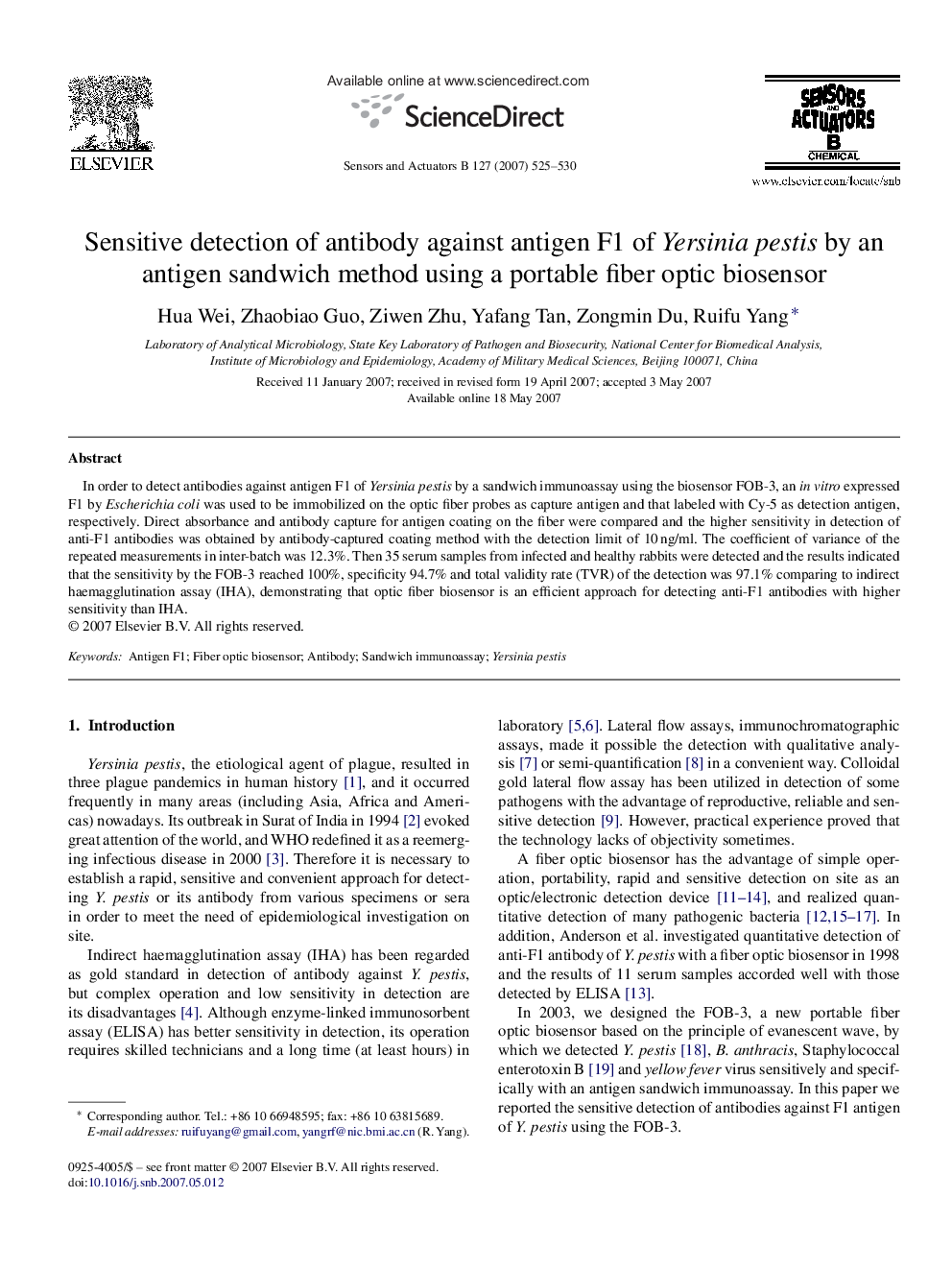| Article ID | Journal | Published Year | Pages | File Type |
|---|---|---|---|---|
| 751565 | Sensors and Actuators B: Chemical | 2007 | 6 Pages |
In order to detect antibodies against antigen F1 of Yersinia pestis by a sandwich immunoassay using the biosensor FOB-3, an in vitro expressed F1 by Escherichia coli was used to be immobilized on the optic fiber probes as capture antigen and that labeled with Cy-5 as detection antigen, respectively. Direct absorbance and antibody capture for antigen coating on the fiber were compared and the higher sensitivity in detection of anti-F1 antibodies was obtained by antibody-captured coating method with the detection limit of 10 ng/ml. The coefficient of variance of the repeated measurements in inter-batch was 12.3%. Then 35 serum samples from infected and healthy rabbits were detected and the results indicated that the sensitivity by the FOB-3 reached 100%, specificity 94.7% and total validity rate (TVR) of the detection was 97.1% comparing to indirect haemagglutination assay (IHA), demonstrating that optic fiber biosensor is an efficient approach for detecting anti-F1 antibodies with higher sensitivity than IHA.
